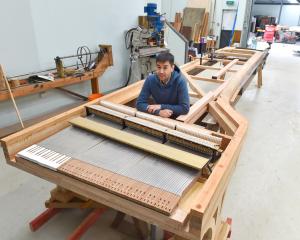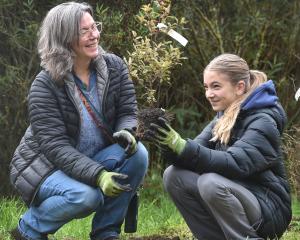Thousands of properties across Dunedin are now covered by new zones of cultural significance to local Maori.
However, the Dunedin City Council says the impact of the change is "relatively benign" for many properties, as long as no threats to the cultural values exist.
The new "wahi tupuna" zones were introduced as part of Dunedin’s second generation district plan (2GP), which set new rules to guide the city’s development.
The plan, which has been years in the making, had been subject to more than 80 appeals since it was released in December, stalling new housing developments and other aspects of its implementation, but not those relating to culturally significant sites.
As a result, wahi tupuna now covered 70 areas across the city, including specific locations such as Blueskin Bay, Otago Harbour, Harbour Cone, Port Chalmers, Quarantine and Goat Islands, Wellers Rock, the area surrounding Mosgiel and a section of Otago coastline stretching from Brighton to Taieri Mouth.
They also covered views, such as Huriawa from Karitane or Mt Watkin from Puketeraki Marae.
Council senior planner Paul Freeland said unlike in Queenstown, the wahi tupuna introduced in Dunedin did not automatically trigger the need for a resource consent and did not constrain permitted activities.
"This is a fundamental difference to the Queenstown approach, where I understand that just the presence of a wahi tupuna results in the need for a resource consent," he said.
Instead, property owners considering discretionary or non-complying activities could be required to consider the area’s wahi tupuna values as part of a wider assessment of effects, where one was required to obtain a resource consent.
For example, the 2GP’s wahi tupuna provisions now recognised the Taieri River’s historic significance as a means of transport for Maori.
The plan now recognised threats to those cultural values, including activities affecting water quality, such as earthworks, new buildings, structures or public amenities.
Anything other than a permitted activity, which could threaten those values, would require consideration under 2GP rules.
The inclusion of wahi tupuna was part of broader efforts within the plan to recognise the council’s statutory obligations under the Treaty of Waitangi, including working with Ngai Tahu as the Crown’s treaty partner in Otago.
The designation of wahi tupuna areas emerged again this week, after Queenstown Lakes District Council advised 2600 Wakatipu landowners their land was now within a "proposed" wahi tupuna area.
The change, which required landowners to consult iwi if undertaking development, was criticised by landowners worried their properties would be devalued, and by a lawyer concerned about the uncertainty and costs surrounding the process.
In 2016, during hearings on Dunedin’s 2GP, Kati Huirapa Runaka ki Puketeraki chairman and tribal elder Matapura Ellison highlighted the importance of flagging places of Maori ancestral importance to prevent "the loss of our cultural heritage".
Advertisement













